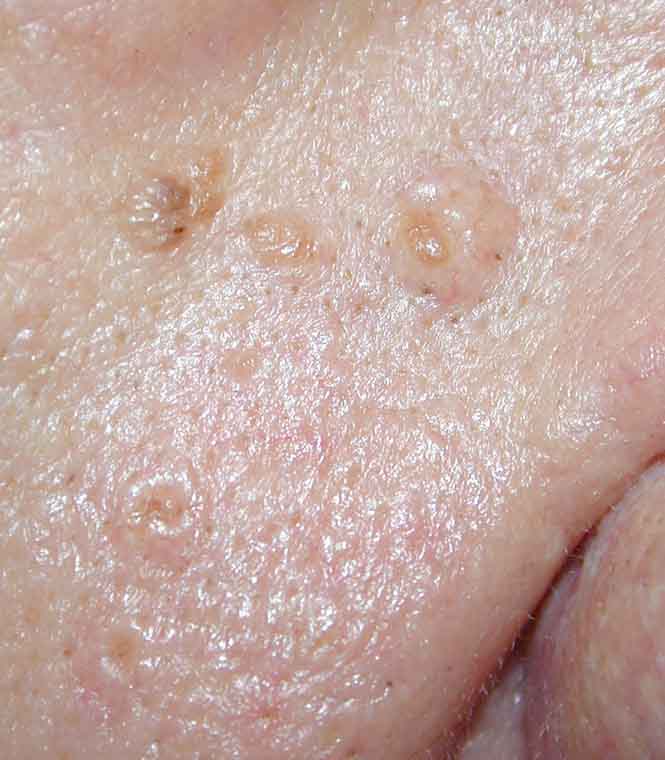
Sebaceous hyperplasia is a skin condition which causes benign bumps to form on the surface of the skin from over-productive oil glands. “Simply put, the oil glands in the skin become dilated and enlarged,” says Emily Johnston, certified physician assistant at Sanova Dermatology. “These bumps tend to be the same color as your skin, but in some cases can have a yellowish tone.” Patients commonly find these skin lesions on the forehead, nose, and cheeks.
Physicians diagnose this condition in patients right away because of their appearance, location and characteristic depression these bumps tend to have in their centers. Sebaceous hyperplasia is benign, but in some situations, they can resemble skin cancer, such as basal cell carcinoma. “If there’s any question, we will often recommend a skin biopsy to rule out anything more serious,” says Emily.
There are many factors that can cause Sebaceous Hyperplasia. Patients with oily skin are more likely to get this condition. Additionally, there is an inherited tendency to these spots. That is, they can run in the family. While genetics plays a large role, the condition typically does not develop in people under the age of 40. Cumulative sun damage can also be a culprit of these pesky bumps, which is another reason, among many, that a strong daily SPF is essential for healthy skin.
Sebaceous Hyperplasia is not harmful to one’s health, so treatment is not a medical requirement. However, many patients with this condition find it to be aesthetically displeasing, so they will opt for a cosmetic solution. “These bumps can be removed effectively with a laser, or with an electric needle in the dermatology clinic. Dermatologists will commonly recommend a specific at-home skin regimen that includes a protective SPF and in some cases, a retinol product. Retinol, also known as vitamin A, helps control the growth of skin cells that can cause clogged glands.
Contact Us
To learn more about Sebaceous Hyperplasia, please contact us to schedule an appointment for your comprehensive consultation.
